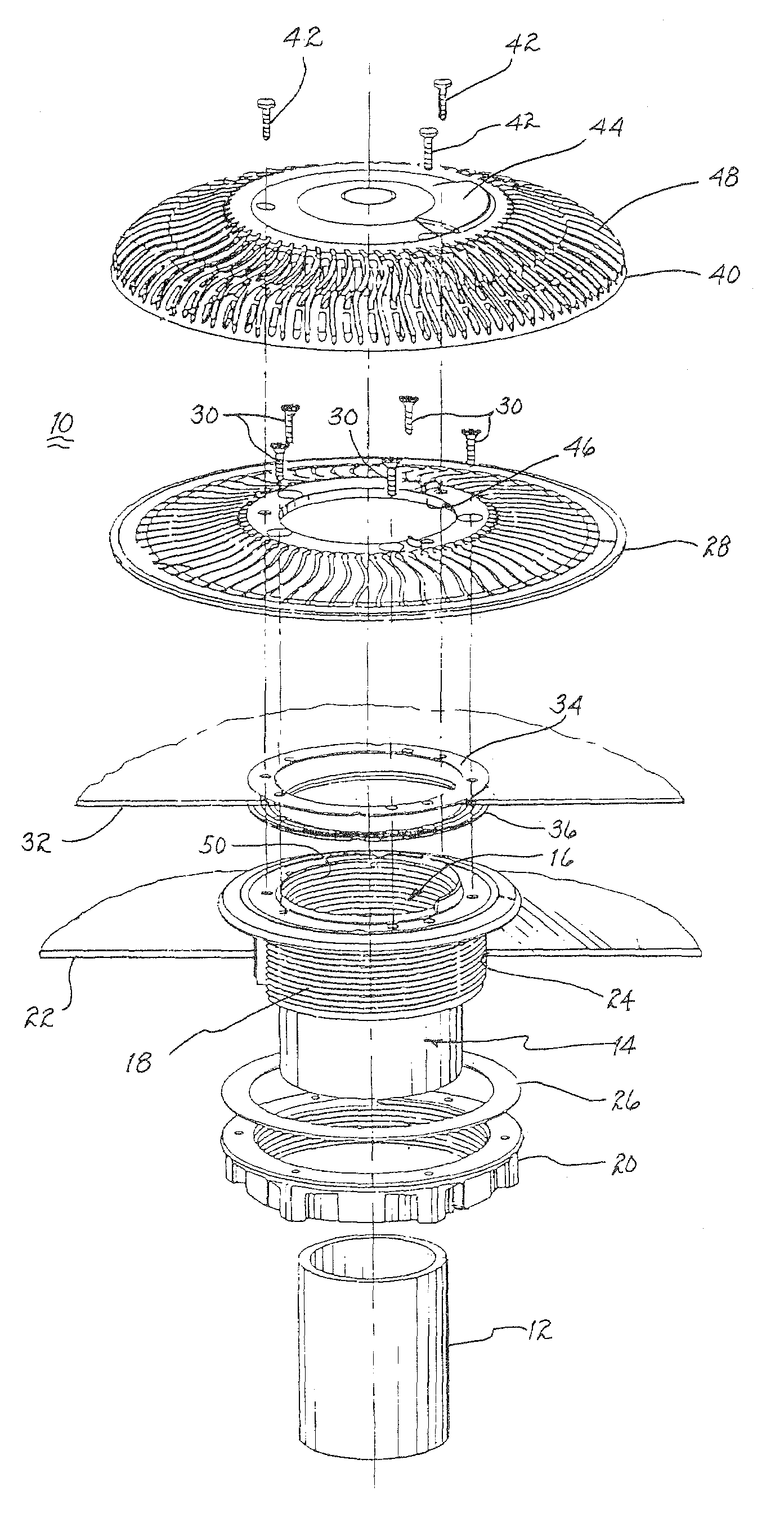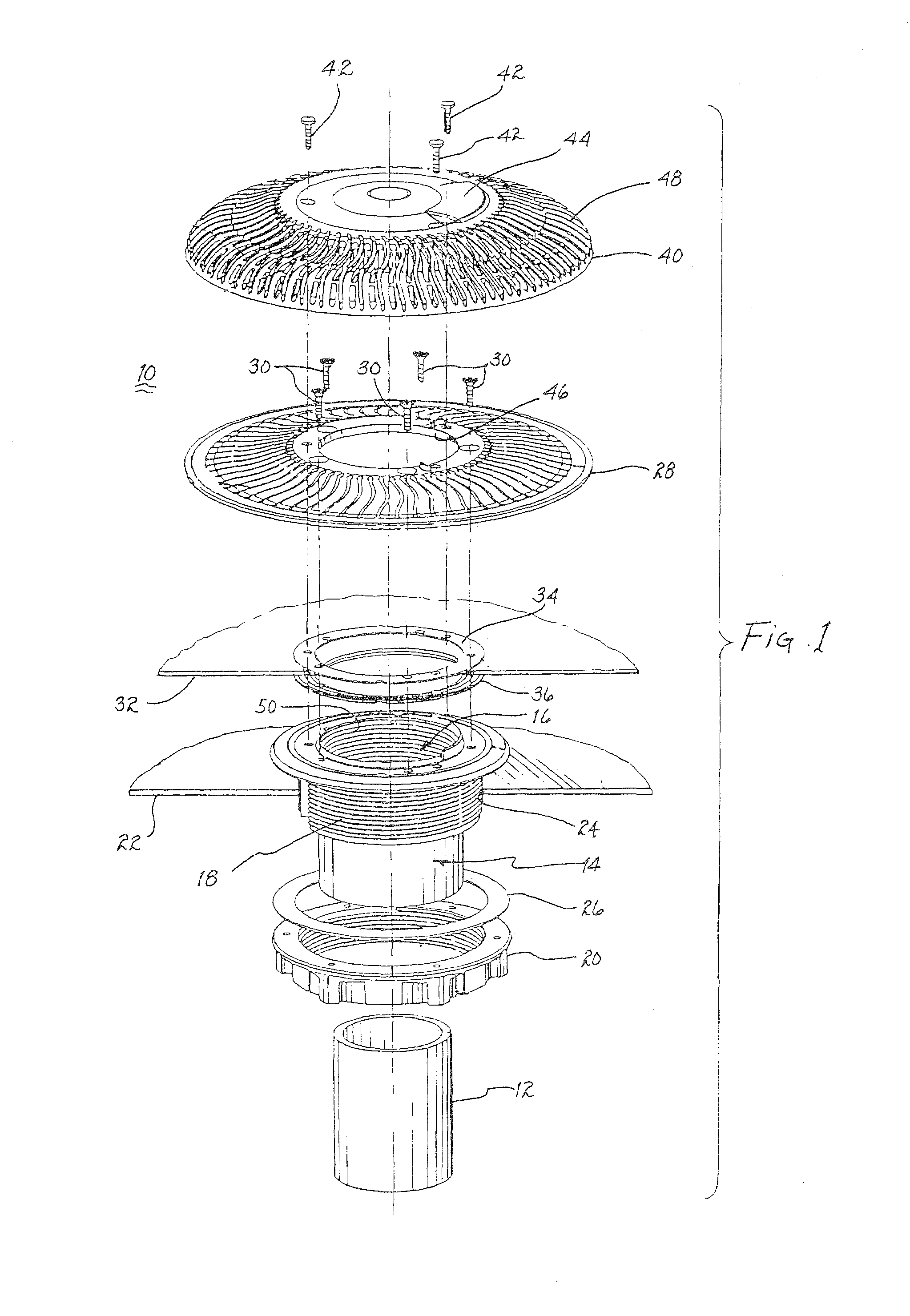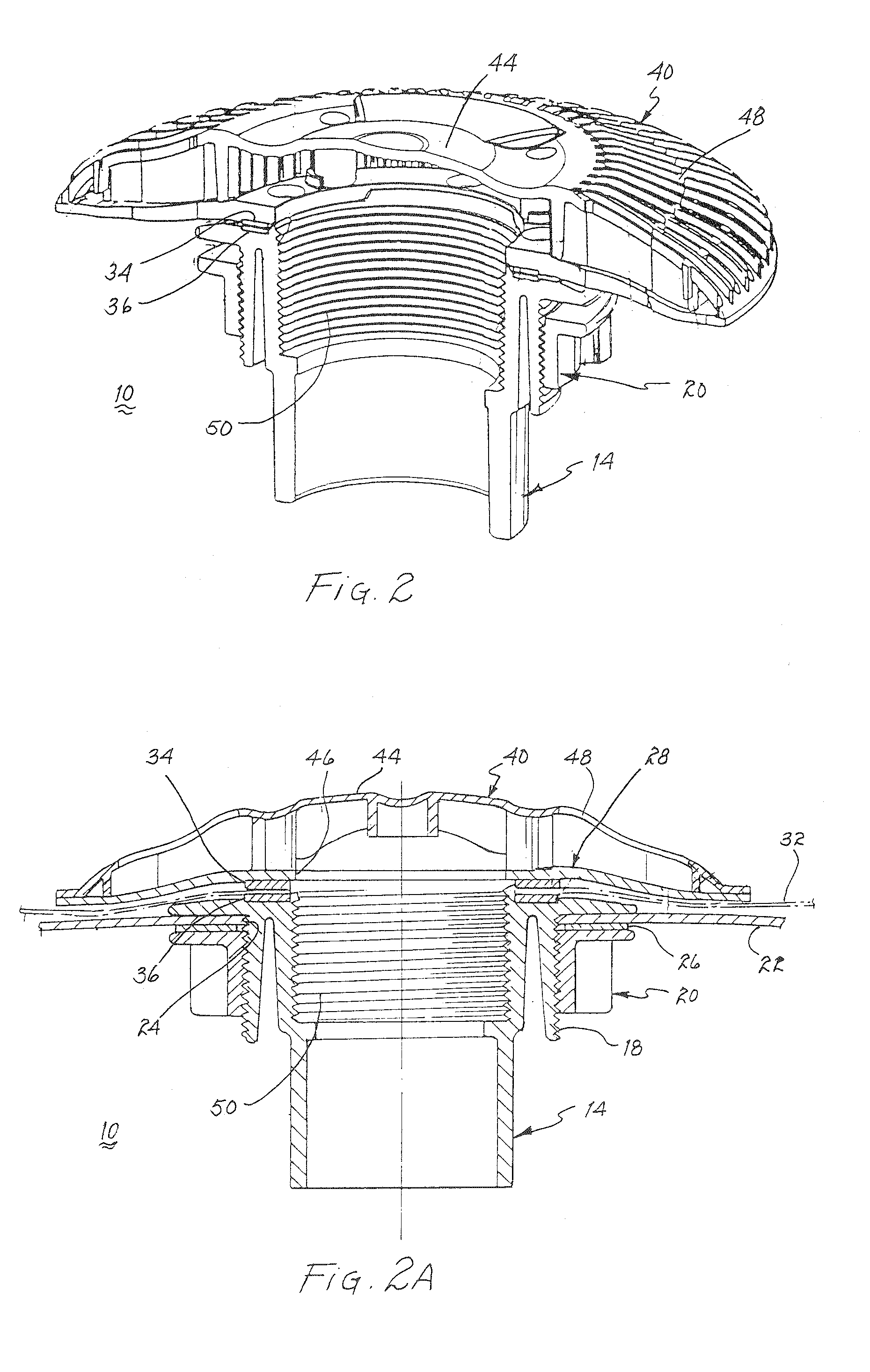Anti-entrapment drain
a technology of anti-entrapment and drain, which is applied in the field of drains, can solve the problems of affecting the safety of users or bathers in pools, spas or baths, and the inability to remove, and achieves the effects of reducing the safety of users and bathers, and reducing the risk of drowning
- Summary
- Abstract
- Description
- Claims
- Application Information
AI Technical Summary
Benefits of technology
Problems solved by technology
Method used
Image
Examples
Embodiment Construction
[0035]Referring to FIG. 1, there is shown an exploded view of a drain 10 for use in a swimming pool, spa or whirlpool bath. The drain is connected to a suction line, representatively identified by numeral 12, which conveys water to a suction pump. The water flowing to the suction pump may pass through a debris trap to collect large sized debris. The water outflow from the suction pump may pass through a filter and into a return line for return to the pool, spa or whirlpool bath.
[0036]Referring jointly to FIGS. 1, 2, 2A, 3 and 4, details of the drain will be described. Suction line 12 is attached to a bulkhead fitting 14, which bulkhead fitting includes a central outlet 16 in fluid communication with the suction line. The bulkhead fitting includes external threads 18 for threaded engagement with a collar 20. If the drain is to be used in conjunction with a fiberglass pool, spa or whirlpool bath having a shell 22, the lower body of the bulkhead fitting is in penetrable engagement with...
PUM
 Login to View More
Login to View More Abstract
Description
Claims
Application Information
 Login to View More
Login to View More - R&D
- Intellectual Property
- Life Sciences
- Materials
- Tech Scout
- Unparalleled Data Quality
- Higher Quality Content
- 60% Fewer Hallucinations
Browse by: Latest US Patents, China's latest patents, Technical Efficacy Thesaurus, Application Domain, Technology Topic, Popular Technical Reports.
© 2025 PatSnap. All rights reserved.Legal|Privacy policy|Modern Slavery Act Transparency Statement|Sitemap|About US| Contact US: help@patsnap.com



